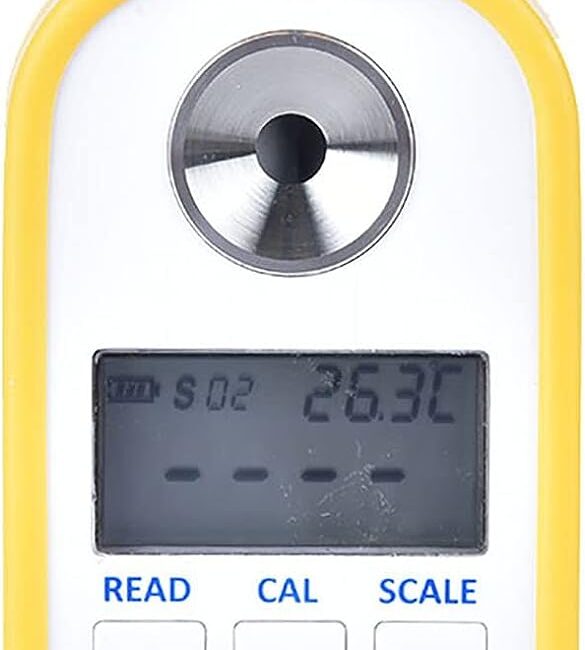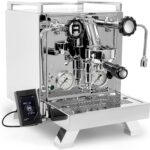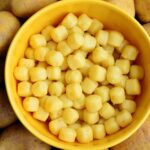What is a Coffee Refractometer: Types and How to Use It? A coffee refractometer is a valuable tool used in the coffee industry to measure the concentration of solubles in brewed coffee. It provides precise and objective data, enabling baristas, roasters, and coffee professionals to understand and control the extraction process better. In this comprehensive guide, we will explore what a coffee refractometer is, the different types available, and how to use it effectively. Let’s dive into the world of coffee refractometers and unlock the secrets they hold for coffee quality and consistency.
Understanding the Basics of Refractometry
What is Refractometry? Refractometry is a scientific method used to measure the refractive index of a substance, which is a measure of how light bends or refracts when passing through it. Different substances have different refractive indices, and this property can be used to analyze the composition and concentration of a solution.
The Principle Behind Refractometers: Refractometers work on the principle that the refractive index of a liquid changes with its solute concentration. The higher the concentration of solutes (dissolved solids) in a liquid, the more the light bends when passing through it. By measuring the amount of light bending, the refractometer can determine the concentration of solutes in the liquid.
Coffee Refractometer Types
Traditional Optical Refractometer: Traditional optical refractometers have been used for a wide range of applications, including the food and beverage industry. They are handheld devices that require a small sample of the liquid (in this case, brewed coffee) to be placed on the refractometer’s prism. The device then measures the refractive index and displays the concentration in Brix, a unit used to measure the sugar content in a liquid.
Digital Refractometer: Digital refractometers are more advanced versions of traditional optical refractometers. They offer a digital readout of the refractive index and concentration, eliminating the need for manual interpretation of the reading. Some digital refractometers also come with additional features, such as automatic temperature compensation and data logging capabilities.
Coffee-Specific Refractometer: Coffee-specific refractometers are a specialized type of digital refractometer designed specifically for the coffee industry. They are calibrated to measure the concentration of solubles in coffee brews, primarily Total Dissolved Solids (TDS) and Extracted Coffee Solids (ECS). These refractometers are highly accurate and provide coffee professionals with essential data for coffee extraction and quality control.
How to Use a Coffee Refractometer
Step 1: Calibration: Before using a coffee refractometer, it’s crucial to calibrate it properly. Calibration ensures that the device provides accurate readings. Coffee refractometers usually come with a calibration liquid or solution of known refractive index (often distilled water). The user must place a few drops of the calibration solution on the refractometer’s prism, close the cover, and adjust the calibration screw until the device displays the correct value for the calibration solution. Calibration should be performed regularly to maintain accuracy.
Step 2: Preparing the Coffee Sample: To measure the concentration of solubles in coffee, you’ll need a representative sample of the brewed coffee. It’s essential to ensure that the sample is well-mixed and free from any large particles or sediments that could affect the reading. Use a spoon or a stirring rod to homogenize the coffee before taking the measurement.
Step 3: Taking the Reading: Place a few drops of the well-mixed coffee sample on the refractometer’s prism. Close the cover to avoid any external light interference. Look through the eyepiece or check the digital display to read the refractive index value. Some coffee refractometers automatically convert the refractive index reading into TDS and ECS values, which are the more relevant measurements for coffee professionals.
Step 4: Interpreting the Results: The refractometer reading will provide the concentration of solubles in the coffee brew, usually expressed as a percentage. For coffee, the most common measurements are TDS and ECS:
- Total Dissolved Solids (TDS): This value represents the total percentage of dissolved solids in the coffee, including coffee solubles, sugars, acids, and minerals. TDS is an essential metric for assessing the overall strength and extraction level of the coffee.
- Extracted Coffee Solids (ECS): ECS is a specific measurement that indicates the percentage of coffee solubles extracted from the coffee grounds during brewing. This measurement is particularly relevant for evaluating the efficiency of the extraction process.
Why Use a Coffee Refractometer?
Using a coffee refractometer offers several benefits and advantages to coffee professionals and enthusiasts:
Consistency in Brewing: A refractometer provides objective data on the concentration of solubles in the coffee, helping to achieve consistent results in every brew. By controlling the TDS and ECS values, coffee professionals can replicate their desired flavor profile consistently.
Extraction Optimization: Refractometers allow coffee professionals to fine-tune the extraction process to achieve the best possible flavor from the coffee grounds. By adjusting variables such as grind size, brew time, and water temperature, they can optimize the extraction efficiency and flavor balance.
Quality Control: Refractometers are powerful tools for quality control in coffee production. Roasters can use them to ensure that their coffee beans are roasted to the desired level of solubility, and baristas can use them to ensure that each espresso shot meets the quality standards set by the roaster.
Recipe Development: Coffee refractometers aid in recipe development for new coffee blends or single-origin coffees. By understanding the solubility characteristics of different coffee beans, roasters can create unique and flavorful blends.
Customer Education: Coffee refractometers can be used as educational tools to help customers understand the impact of different brewing parameters on the coffee flavor. Baristas can demonstrate how adjustments in brewing can lead to varying TDS and ECS values, resulting in different taste profiles.
Limitations and Considerations
While coffee refractometers are powerful tools, they do have some limitations and considerations:
Cost: Coffee-specific refractometers can be relatively expensive, especially when compared to traditional optical refractometers. However, for coffee professionals who prioritize precision and consistency, the investment is often justified.
Understanding and Interpreting Data: Using a refractometer requires some level of understanding of the data it provides. Interpreting TDS and ECS values and making informed adjustments based on the readings may take some practice and experience.
Dependency on Other Factors: While a refractometer can provide valuable data, it should be used in conjunction with other sensory evaluation methods, such as taste testing. Flavor perception is subjective, and a refractometer reading alone may not fully capture the complexity of the coffee.
Cleaning and Maintenance: Like all measuring devices, refractometers require regular cleaning and maintenance to ensure accuracy. Properly cleaning the prism and maintaining the device’s calibration are essential for reliable results.
Conclusion
In conclusion, a coffee refractometer is a valuable tool that provides objective data for measuring the concentration of solubles in brewed coffee. It allows coffee professionals to achieve consistency in their brews, optimize the extraction process, and control the quality of their coffee. By measuring TDS and ECS values, roasters and baristas can fine-tune their brewing parameters and develop unique flavor profiles for their coffee offerings.
While coffee refractometers come at a cost and require some understanding of the data they provide, the benefits they offer in terms of coffee quality and consistency make them indispensable tools for serious coffee enthusiasts and professionals in the coffee industry. Whether it’s a specialty coffee shop striving for excellence or a roastery aiming to perfect their blends, a coffee refractometer is a powerful ally in the pursuit of exceptional coffee experiences.
CLICK HERE to buy a Coffee Refractometer on AMAZON



